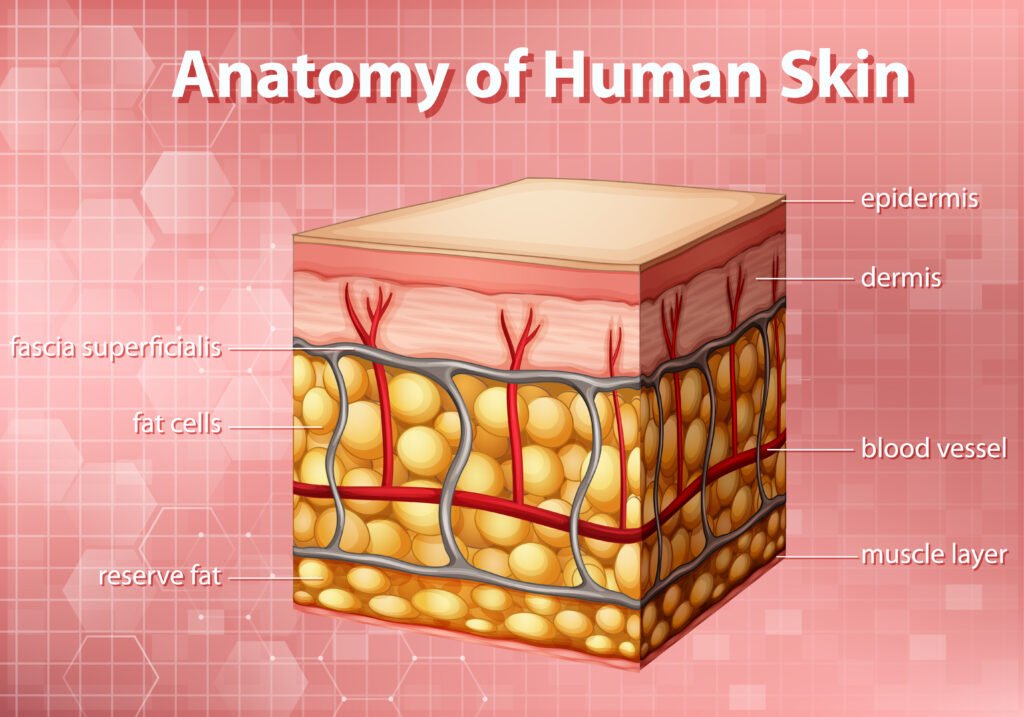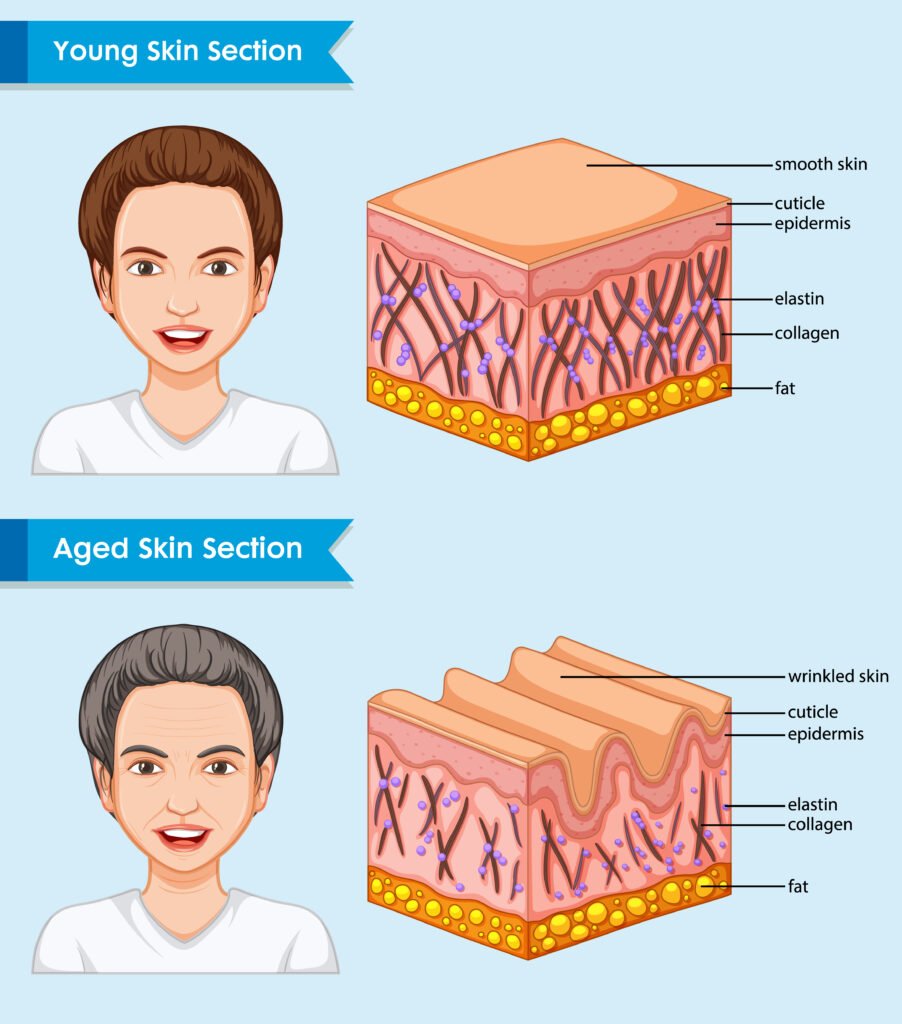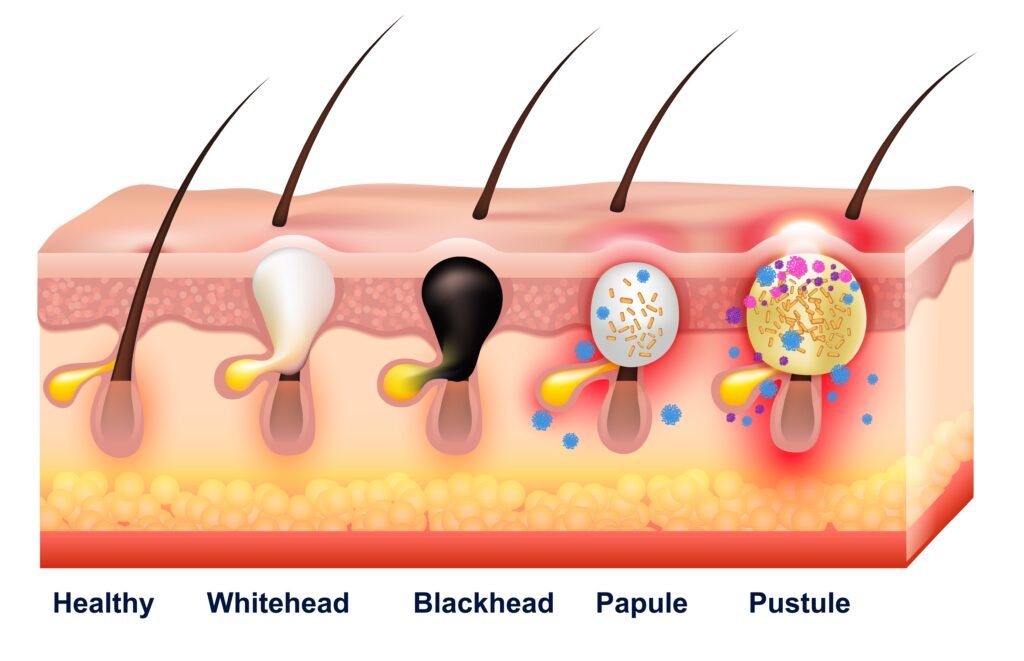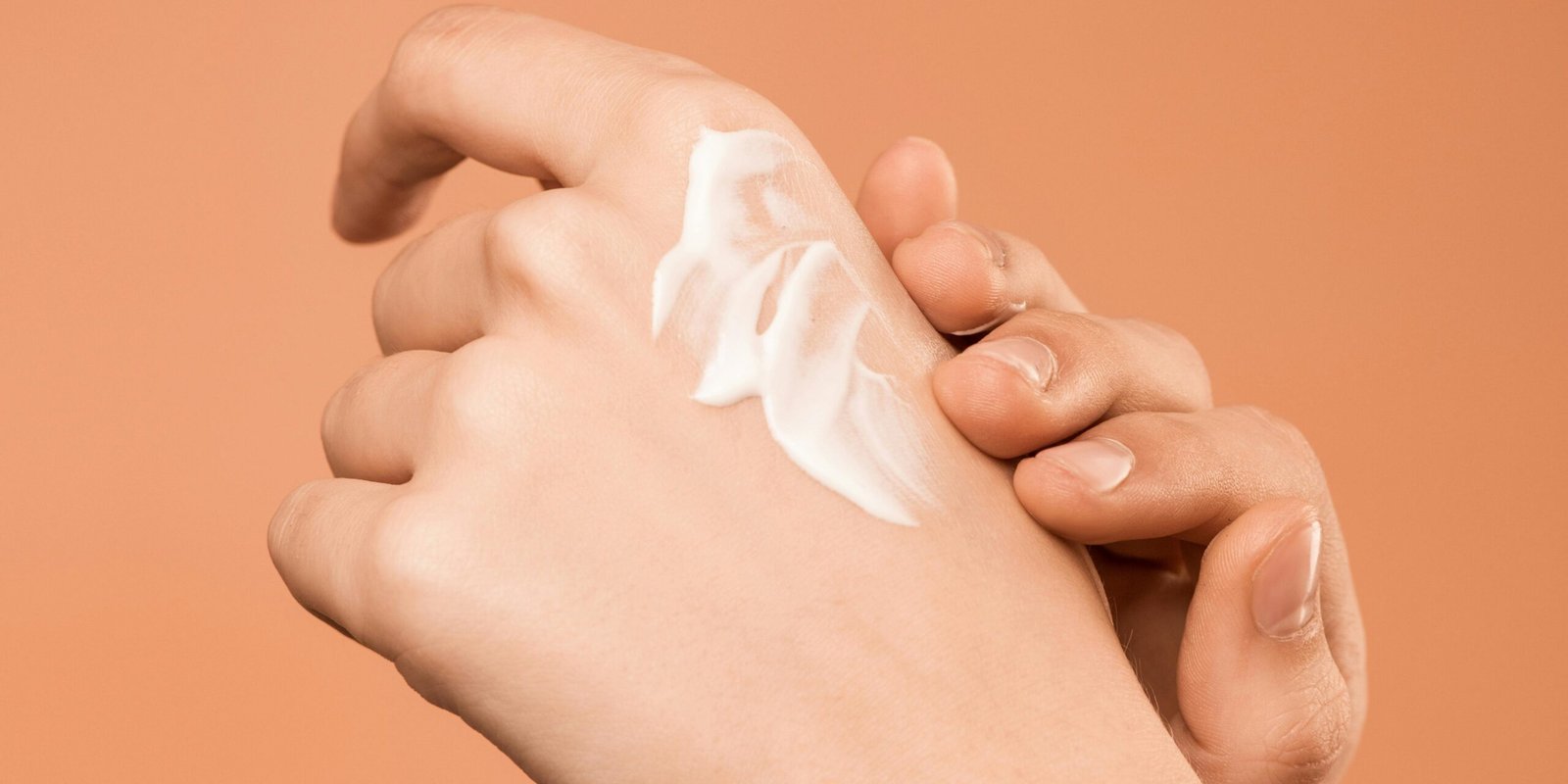Table of Contents
Welcome to the remarkable world of the skin, our body’s largest and most versatile organ. Often underestimated, the skin is a dynamic and multifunctional organ that serves as a protective barrier between our internal environment and the external world. Beyond its role as a shield, the skin is a sensory marvel, responding to touch, temperature, and environmental cues. Join us on a journey of exploration into the intricacies of this incredible organ, uncovering its anatomy, functions, and the myriad ways it contributes to our overall health.
From regulating body temperature to serving as a canvas for self-expression, the skin is a testament to the complexity and adaptability of the human body. Let’s peel back the layers and delve into the fascinating realm of the skin organ, appreciating its beauty, resilience, and vital functions that make it an indispensable part of our physiological tapestry.
ANATOMY

The skin is the largest organ of the human body, serving as a protective barrier between the internal organs and the external environment. Its complex anatomy includes various layers, structures, and components that contribute to its functions in protection, sensation, thermoregulation, and more.
The skin consists of three main layers: the epidermis, dermis, and subcutaneous tissue (hypodermis).
EPIDERMIS
The outermost layer of the skin, the epidermis, is composed mainly of stratified squamous epithelium. It is further divided into several sublayers. The outermost layer, the stratum corneum, is composed of dead, keratinized cells that provide protection and waterproofing. The stratum basale is the deepest layer, where new skin cells are produced and then pushed toward the surface as they mature.
DERMIS
Beneath the epidermis lies the dermis, a thicker layer primarily composed of connective tissue. The dermis contains blood vessels, nerves, hair follicles, sweat glands, and sebaceous glands. Collagen and elastin fibers provide strength, elasticity, and structural support to the skin. The papillary layer, closer to the epidermis, contains small blood vessels and nerve endings, while the reticular layer, deeper within the dermis, houses larger blood vessels and other structures.
HYPODERMIS
The subcutaneous tissue is the deepest layer, consisting of adipose (fat) tissue and connective tissue. It serves as insulation, energy storage, and a cushioning layer. Blood vessels and nerves that supply the skin are also found in the subcutaneous tissue.
Structures within the skin include:
HAIR FOLLICLES
Embedded in the dermis, hair follicles produce hair. Arrector pili muscles, connected to hair follicles, contract in response to cold or emotional stimuli, causing hair to stand upright.
SWEAT GLANDS
Eccrine and apocrine sweat glands produce sweat, contributing to temperature regulation and waste elimination. Eccrine glands are widespread, while apocrine glands are concentrated in specific areas like the axillae.
SEBACEOUS GLANDS
Sebaceous glands secrete sebum, an oily substance that lubricates the skin and hair, preventing dehydration.
The skin is richly supplied with blood vessels, ensuring nutrient delivery, waste removal, and temperature regulation. Lymphatic vessels help drain excess fluids and immune cells. Nerves in the skin, including sensory receptors, convey information about touch, pressure, temperature, and pain. Meissner’s corpuscles and Merkel cells detect light touch, while Pacinian corpuscles sense pressure and vibration. The skin’s colour is influenced by melanin, produced by melanocytes in the epidermis. Melanin protects against UV radiation and determines skin pigmentation.
FUNCTION

The skin, as the body’s largest organ, serves a multitude of essential functions that contribute to our overall health and well-being. Here are the primary functions of the skin:
- Protection: The skin acts as a protective barrier, shielding the body from external threats such as microorganisms, harmful substances, and physical injuries. The outermost layer, the epidermis, forms a resilient barrier that helps prevent infections and damage.
- Regulation of Temperature: Through processes like sweating and vasodilation (expansion of blood vessels) or vasoconstriction (contraction of blood vessels), the skin helps regulate body temperature. Sweat evaporation cools the body, while blood vessel changes assist in heat retention or dissipation.
- Sensation: The skin is rich in sensory receptors that detect stimuli such as touch, pressure, temperature, and pain. Nerve endings in the skin provide valuable information about our environment and play a crucial role in our ability to interact with the world.
- Excretion: Small amounts of waste products, including water, salts, and certain chemicals, are eliminated through sweat, contributing to the body’s detoxification process.
- Immune Defense: The skin’s immune cells, including Langerhans cells, help defend against infections and pathogens. The skin’s acidity and the presence of antimicrobial substances create an environment that inhibits the growth of harmful microorganisms.
- Synthesis of Vitamin D: When exposed to sunlight, the skin produces vitamin D, an essential nutrient for bone health. UVB rays from the sun stimulate the conversion of a precursor molecule in the skin into active vitamin D.
- Blood Reservoir: The skin’s blood vessels can expand or contract to redirect blood flow as needed. This ability allows the skin to serve as a reservoir, providing extra blood when other parts of the body require increased circulation.
- Metabolic Functions: The skin plays a role in various metabolic processes, including the synthesis of certain proteins and the conversion of precursors into active substances.
- Water Balance: The skin helps maintain proper hydration levels by preventing excessive water loss and regulating fluid balance.
- Expression and Communication: The skin, especially the face, serves as a canvas for expressions and emotions. Changes in skin colour, texture, and features contribute to non-verbal communication.
- Self-Healing: The skin has remarkable regenerative abilities. It can repair and regenerate itself to a certain extent, healing wounds and restoring its integrity.
DISEASES

The skin is susceptible to various conditions and diseases that can affect its appearance, function, and overall health. Here are some common skin disorders and diseases:
- Acne: Acne is a common skin condition characterized by the presence of pimples, blackheads, and whiteheads. It often occurs during puberty due to increased oil production and the clogging of hair follicles.
- Eczema (Dermatitis): Eczema is a group of inflammatory skin conditions that cause redness, itching, and rash. Atopic dermatitis is a common form, often associated with allergies and asthma.
- Psoriasis: Psoriasis is a chronic autoimmune condition that causes the rapid buildup of skin cells, leading to thick, silvery scales and red patches. It can affect various parts of the body.
- Rosacea: Rosacea is a chronic skin condition that primarily affects the face, causing redness, visible blood vessels, and sometimes small, red bumps. It often occurs in adults.
- Dermatitis Herpetiformis: Dermatitis herpetiformis is an itchy, blistering skin rash linked to gluten sensitivity. It is associated with celiac disease.
- Hives (Urticaria): Hives are raised, red welts on the skin that often result from an allergic reaction. They can be triggered by various factors, including certain foods, medications, or insect bites.
- Skin Cancer: Skin cancer, including melanoma, basal cell carcinoma, and squamous cell carcinoma, can develop due to prolonged exposure to ultraviolet (UV) radiation. Early detection is crucial for successful treatment.
- Contact Dermatitis: Contact dermatitis is an inflammatory skin reaction caused by contact with irritants or allergens. It leads to red, itchy, and sometimes blistering skin.
- Vitiligo: Vitiligo is a skin disorder characterized by the loss of pigment, resulting in white patches on the skin. It occurs when melanocytes, the cells responsible for skin colour, are destroyed.
- Fungal Infections: Various fungal infections, such as ringworm (tinea), athlete’s foot, and yeast infections, can affect the skin, causing redness, itching, and discomfort.
- Cellulitis: Cellulitis is a bacterial skin infection that can result in red, swollen, and painful skin. It often occurs when bacteria enter through a cut or wound.
- Shingles (Herpes Zoster): Shingles is a viral infection caused by the varicella-zoster virus, the same virus that causes chickenpox. It results in a painful rash with fluid-filled blisters.
- Warts: Warts are caused by the human papillomavirus (HPV) and can appear on various parts of the body. They are characterized by rough, raised growths on the skin.
- Impetigo: Impetigo is a highly contagious bacterial skin infection, often seen in children. It leads to red sores or blisters that rupture, forming a yellowish crust.
It’s important to seek medical attention for any persistent or concerning skin issues. Dermatologists specialize in diagnosing and treating skin disorders, and early intervention can be crucial in managing many skin conditions effectively.
HEALTHY SKIN

Maintaining healthy skin involves adopting good skin care habits, a balanced lifestyle, and protective measures. Here are some tips to keep your skin organ healthy:
- Protect from Sun Exposure: Use sunscreen with a high SPF to protect your skin from harmful UV rays. Limit sun exposure, especially during peak hours, and wear protective clothing such as hats and sunglasses.
- Cleanse Gently: Use a mild, pH-balanced cleanser to cleanse your skin. Avoid harsh soaps or excessive scrubbing, as these can strip the skin of natural oils and disrupt its barrier function.
- Stay Hydrated: Drink an adequate amount of water to keep your skin hydrated. Proper hydration supports overall skin health and helps maintain elasticity.
- Moisturize: Apply a moisturizer suitable for your skin type to prevent dryness and maintain skin suppleness. Moisturizers with ingredients like hyaluronic acid and glycerin can be beneficial.
- Balanced Diet: Eat a nutritious diet rich in fruits, vegetables, lean proteins, and whole grains. Antioxidant-rich foods can help protect the skin from damage caused by free radicals.
- Manage Stress: Chronic stress can affect the skin. Practice stress-reducing activities such as meditation, deep breathing, or yoga to promote skin health and overall well-being.
- Get Adequate Sleep: Ensure you get enough quality sleep. During sleep, the body repairs and regenerates, contributing to healthy skin.
- Avoid Smoking: Smoking can accelerate skin ageing and contribute to wrinkles. Quitting smoking can have positive effects on skin health.
- Limit Alcohol Consumption: Excessive alcohol consumption can dehydrate the skin. Consume alcohol in moderation and drink plenty of water.
- Exercise Regularly: Engage in regular physical activity to improve blood circulation and support overall health. Exercise promotes a healthy complexion.
- Avoid Hot Water: Use lukewarm water instead of hot water when showering or washing your face. Hot water can strip the skin of natural oils.
- Protect from Harsh Weather: During extreme weather conditions, protect your skin from harsh winds, cold temperatures, or dry air by using appropriate skincare and clothing.
- Regular Check-ups: Keep an eye on your skin for any changes, and consult a dermatologist if you notice unusual moles, skin discolourations, or persistent skin issues.
- Gentle Hair Care: Choose mild shampoos and conditioners to avoid irritation. Protect your skin from harsh chemicals in hair products.
- Avoid Picking at Skin: Refrain from picking at pimples or blemishes, as it can lead to scarring and infections. Let skin conditions heal naturally.
In conclusion, the skin, our body’s largest and most visible organ, deserves attention and care to maintain its health and vitality. Its multifaceted functions, from providing a protective barrier to reflecting our overall well-being, underscore the importance of adopting good skin care practices and a balanced lifestyle. By protecting against sun exposure, staying hydrated, nourishing the body with a healthy diet, and embracing stress-reducing habits, we can contribute to the resilience and radiance of our skin.
Regular check-ups and a mindful approach to skincare ensure that this remarkable organ remains a canvas of health, reflecting both our internal balance and the external care we invest in it. As we appreciate the skin’s versatility and beauty, let us cultivate habits that honour its significance in promoting not only physical health but also a positive sense of self.

